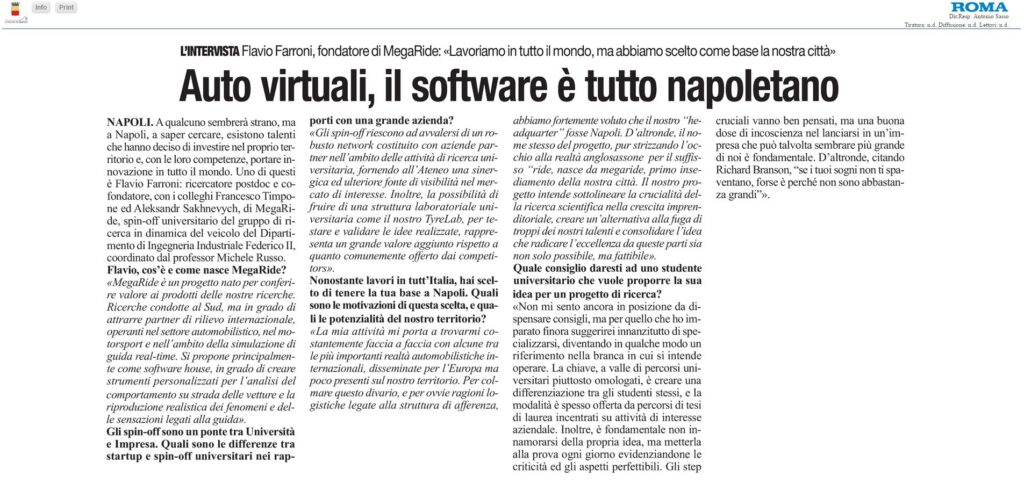Il Roma – 4/07/2016
Un articolo de “Il Roma” racconta il progetto MegaRide – applied vehicle research, spin-off del Dipartimento di Ingegneria Industriale – Federico II
trasferimento tecnologico, crescita territoriale, innovazione

Il Roma – 4/07/2016
Un articolo de “Il Roma” racconta il progetto MegaRide – applied vehicle research, spin-off del Dipartimento di Ingegneria Industriale – Federico II
trasferimento tecnologico, crescita territoriale, innovazione
